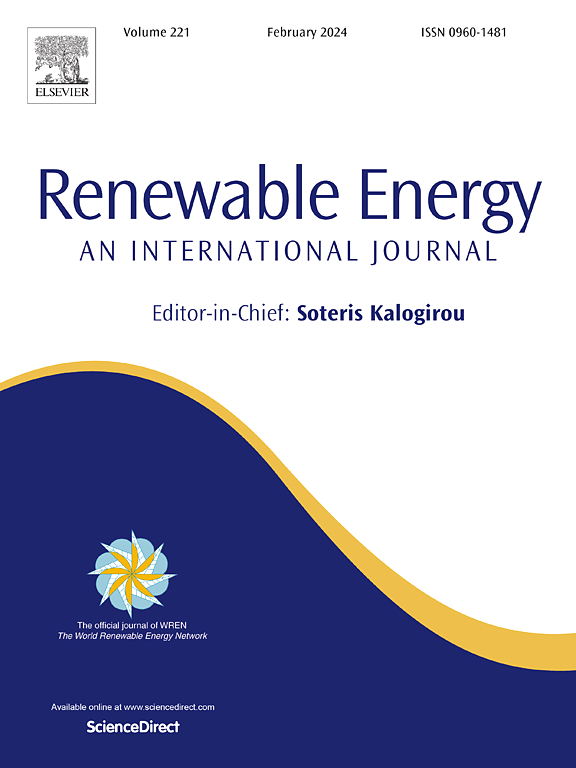利用能量平衡分析法对1 mw石英管束固体颗粒太阳能接收器进行热性能测试与分析
IF 9.1
1区 工程技术
Q1 ENERGY & FUELS
引用次数: 0
摘要
本文提出了一种利用能量平衡法测试和计算1 mw石英管固体颗粒太阳能接收器(SPSR)热效率的方法,并通过北京延庆的多条件实验进行了验证。建立了传热模型,量化了对流热损失和辐射热损失,并利用实测的吸热功率系统地分析了接收机的瞬时热效率及其影响因素。实验结果表明,该接收机的最高输出温度为699.6℃,峰值热效率为87.5%,最大吸热功率为877.3 kW。有代表性的研究结果表明,效率波动限制在2.63%以内,最高效率为72.41%,具有良好的运行稳定性。提高颗粒质量流率可显著提高吸热能力,减少热损失。DNI的变化直接影响接收器的表面温度,热效率由颗粒吸热和总热损失之间的动态平衡决定。此外,热效率随颗粒出口温度和表面温度的升高而降低。本文章由计算机程序翻译,如有差异,请以英文原文为准。
Thermal performance testing and analysis of a 1 MWth quartz tube bundle solid particle solar receiver using the energy balance analysis method
In this study, a method for testing and calculating the thermal efficiency of a 1 MWth quartz tube-based solid particle solar receiver (SPSR) is proposed, utilizing the energy balance approach, and is validated through multi-condition experiments in Yanqing, Beijing. A heat transfer model is developed to quantify convective and radiative heat losses, while measured heat absorbed power is employed to systematically analyze the instantaneous thermal efficiency of the receiver and its influencing factors. Results from 26 completed experiments reveal that the receiver achieves a maximum outlet temperature of 699.6 °C, a peak thermal efficiency of 87.5 %, and a maximum heat absorbed power of 877.3 kW. Representative findings indicate that efficiency fluctuations are limited to less than 2.63 %, with a maximum efficiency of 72.41 %, demonstrating excellent operational stability. Increasing the particle mass flow rate significantly improves heat absorbed power and reduces heat losses. Variations in DNI directly influence the receiver's surface temperature, with thermal efficiency governed by the dynamic balance between heat absorption by particles and overall heat losses. Additionally, the thermal efficiency declines as particle outlet temperature and surface temperature rise.
求助全文
通过发布文献求助,成功后即可免费获取论文全文。
去求助
来源期刊

Renewable Energy
工程技术-能源与燃料
CiteScore
18.40
自引率
9.20%
发文量
1955
审稿时长
6.6 months
期刊介绍:
Renewable Energy journal is dedicated to advancing knowledge and disseminating insights on various topics and technologies within renewable energy systems and components. Our mission is to support researchers, engineers, economists, manufacturers, NGOs, associations, and societies in staying updated on new developments in their respective fields and applying alternative energy solutions to current practices.
As an international, multidisciplinary journal in renewable energy engineering and research, we strive to be a premier peer-reviewed platform and a trusted source of original research and reviews in the field of renewable energy. Join us in our endeavor to drive innovation and progress in sustainable energy solutions.
 求助内容:
求助内容: 应助结果提醒方式:
应助结果提醒方式:


